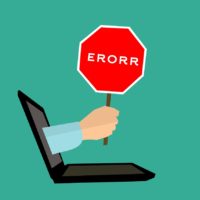 Disadvantages of Not Having UPC Codes on Amazon
Disadvantages of Not Having UPC Codes on Amazon
Without exception, Amazon sellers are expected to secure Universal Product Codes (UPC) to their merchandise. It does not matter whether goods sold on the Amazon Marketplace are used, new or handmade, they must have UPC numbers for the purpose of being listed and assigned their unique Amazon Standard Identification Numbers (ASINs). Sellers who intend to sell items that have already been entered on Amazon’s massive product catalog do not have to worry about getting UPC numbers. However, manufacturers, inventors, private label sellers, and exclusive distributors must provide new codes that comply with recent rules enacted by the company.
How UPC Numbers Work Within Amazon
Founder and CEO Jeff Bezos did not start off his e-commerce empire with UPC numbers. When Amazon started off as an online bookseller, Bezos took advantage of the International Standard Book Number (ISBN) to start building a product catalog. Later, the Amazon founder settled on the idea of using 10 characters as product codes when the company introduced the ASIN format.
There was a time when Amazon allowed certain items to be sold without Global Trade Item Numbers (GTIN) such as UPC and ISBN. That was during a brief period in the early days of the third-party marketplace. These days, all products need to be labeled with GTINs that follow the ISBN, UPC or European Article Number format. For North American sellers, this means following the proper procedure to obtain UPCs from Global Standard 1, more commonly known as GS1, is going through resellers.
Understanding GS1 Better
GS1 serves a purpose similar to the International Standards Organization (ISO) in terms of providing uniformity across the global retail and supply chains. If you are a manufacturer or brand owner seeking to gain a foothold in the Amazon Marketplace, you will need to get GS1 UPCs that Amazon can verify, and this means registering your company and products by following the process at GS1.org. Since 2016, Amazon has been checking UPCs against the vast GS1 databases. In some cases, sellers who had purchased their UPCs from a third-party company have been unable to either create new listings or edit existing ones. New UPCs must match the name of Amazon vendors with the names registered by GS1, which means that if a third-party UPC provider fails to update the GS1 registry, the seller will not be able to transact products on the marketplace.
The Push Towards Brand Protection
The news about Amazon’s crosschecking the GS1 database has not sat well with many sellers who were used to obtaining their UPCs from third-party providers, but even these companies are advising their customers that their codes are not guaranteed to work at stores such as Home Depot, Walmart, Costco, Kroger, and Amazon. In these cases, sellers should go straight to GS1.
E-commerce analysts have commented that this move by Amazon is part of a push towards brand protection, and this started a few years ago with the introduction of the Brand Registry and Brand Gating programs, which are designed to prevent gray market practices such as counterfeiting and ASIN hijacking.
Getting UPCs from GS1 and completing Brand Registry applications are only part of the brand protection system that Amazon sellers should extend to the products they introduce to the marketplace. Active monitoring of ASINs with solutions such as Brandlox is required in order to implement a solid brand protection system. For more information about Brandlox and how it can help you against unauthorized sellers and counterfeiters, contact an e-commerce security specialist today.
